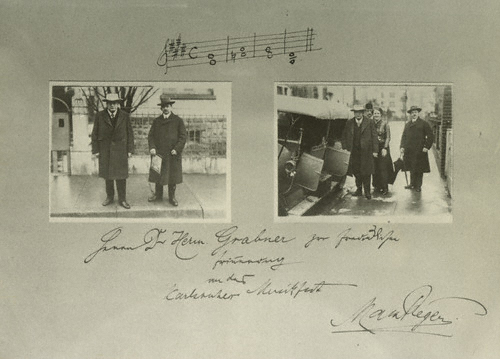1. Meiningen

Reger turns to orchestral song for the first time and completes An die Hoffnung, Op. 124, in May, a work that does not deny the tradition of Wagner’s great final monologues. In the Romantische Suite, Op. 125, as well as in the Böcklin-Suite, Op. 128, he explores symphonic works of impressionistic sound appeal on an extra-musical basis. Through meticulous preparation, Reger and the Meiningen Hofkapelle bring his own works, but also those of tradition, to perfection; the symphonies of Johannes Brahms form a focal point of his repertoire, to which he makes unauthorised retouchings, to the indignation of the sworn Brahms supporters, above all Fritz Steinbach.
In November, Karlsruhe continues the series of Reger festivals; with the Hofkapelle, Reger achieves a ““victory all along the line” as a composer and conductor”1.Increasingly stressed by his restless concert and teaching activities (see concert season 1912/13), Reger can compose in the following years essentially only during the summer months.
Postal items from this year whose sender or addressee is Max Reger.
Images from the Max Reger Foto Gallery that originate from this year and have a direct reference to Max Reger.
Reference
Max Reger Biography – 1912, in: Max-Reger-Portal, www.maxreger.info/biography/1912, Max Reger Biography Data, V. 3.2.0, last check: 2nd December 2025.